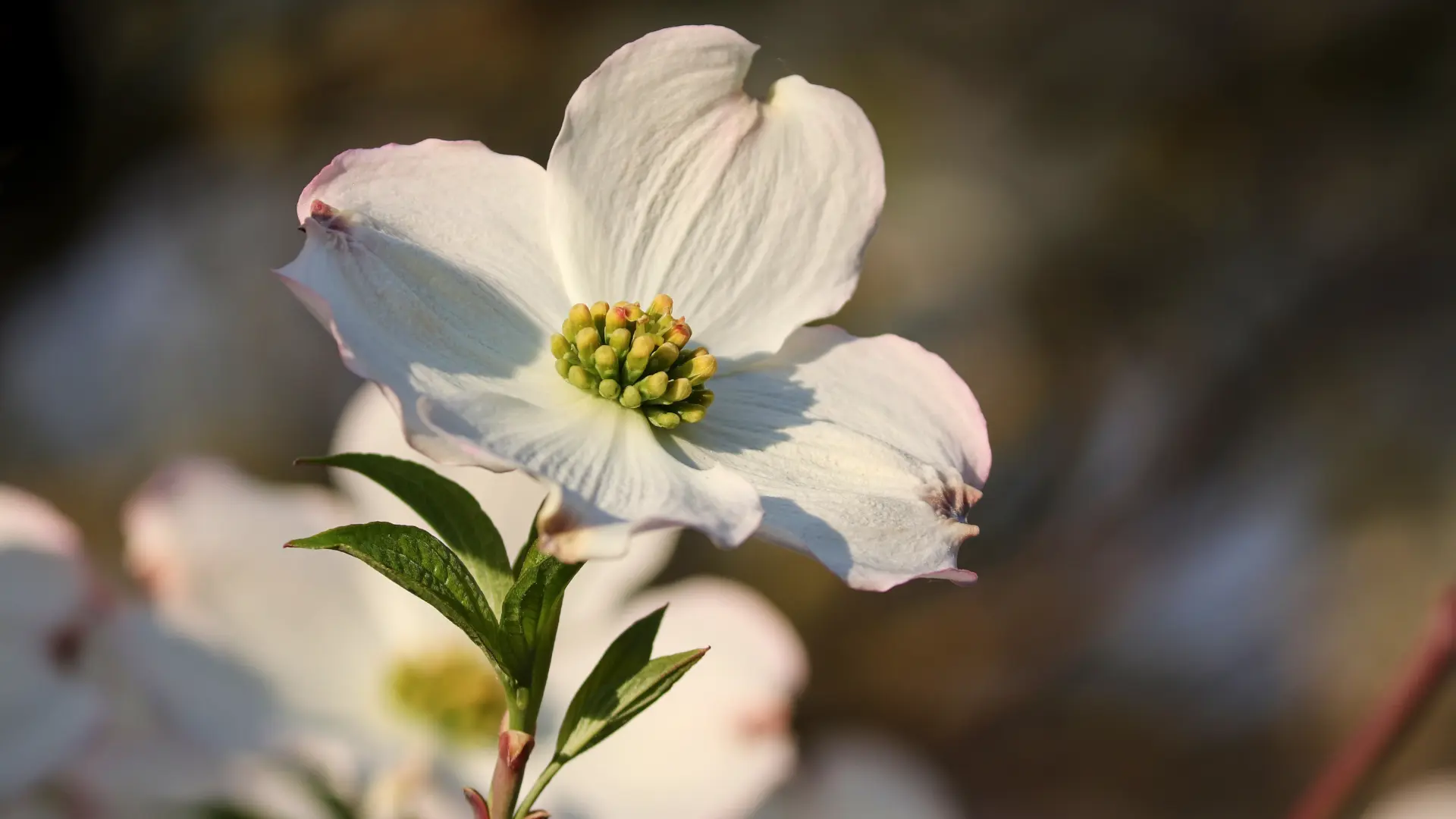In our little world, there are a vast amount of flowers for us to enjoy. The delicate blooms of the deciduous dogwood tree are part of that number.
Dogwood trees in full bloom are the definition of delicate beauty. The soft pink and white blooms are tiny and delicate and carry a sweet fragrance one cannot get enough of.
Dogwoods offer an unmatched display of beauty. There are different varieties of this plant: large trees and small flowering shrubs.
Dogwoods are a great landscape addition, providing something to look at all year, with leaves that turn red in fall. Some species grow small red berries in the fall, attracting birds.
When do Dogwoods Bloom?

Dogwoods are among the first set of shrubs to bloom. They signify an end to the cold winter, bringing a splash of color in the bleak darkness.
They begin to put on a stunning display in spring, with most varieties blooming from April to mid-May. Each variety has its own bloom time, though.
How Long do Dogwoods Take to Bloom?
The dogwood takes several years to mature before producing flowers and fruits. They often take five to seven years before they start blooming in earnest.
While your dogwood is taking this long to bloom, it is healthy and not under stress, so do not be frightened about it taking too much time.
The best thing is when your dogwood starts to bloom, it will do so abundantly and continue to produce flowers for years to come.
How Long do Dogwood Blooms Last?
The dogwood will produce its many pastel flowers for two to four weeks each spring. The individual flowers will last depending on many factors.
What this shrub lacks in terms of blooming length, it makes up for in sheer flower power.
This ornamental beauty provides a vivid and delicate welcome to spring and warmer weather, even though it is short-lived.
How to Care for a Blooming Dogwood
Once established in the landscape, caring for dogwood trees becomes relatively easy. As long as they are planted in the right conditions, maintenance will not be a problem.
To care for your flowering dogwood, water deeply once a week. Never allow the soil to dry out completely.
Adding a layer of mulch will help your plant retain moisture, reducing the need to water so often.
Monitor your plant to make sure it is getting enough light. As you may well know, better lighting equals better blooming.
You can keep your plant in the full sun or partial shade with filtered light. Cut back branches or taller trees that may be blocking too much of the sun.
The soil should be well-draining and acidic. Established dogwood does not need fertilizer, but if the soil needs some amendment, you can apply some compost.
If you notice any diseases or insect infestation, prune the affected branches immediately.
How to Get a Dogwood to Bloom

When a dogwood does not bloom, treatment usually involves an assessment of location and care practices.
The several reasons why a dogwood will not bloom include too much nitrogen, excess pruning, poor moisture, and lighting Issues, to mention a few.
Too much Nitrogen
During the period of vigorous growth, the plant will put all its energy into developing new leaves and branches, so fertilization now and then is needed.
Nitrogen is good for the growth of leaves, but too much can prevent the place from flowering. To correct this, stop using nitrogen-rich fertilizer on your dogwood tree.
Use a balanced fertilizer that has a high phosphorus content or an organic fertilizer that is slow-release and will promote flowering.
Lighting Issues
Dogwoods naturally grow on the edge of the forests, so they normally spend their day in shade and sunlight.
Too much or too little sun from a dense shade will hinder flowering. Your dogwood should be getting half a day of sun to bloom properly.
Consider moving your tree or correcting the existing conditions to allow enough light to get to your dogwood.
If too much shade is the problem, you can thin out taller trees to allow filtered light to reach your dogwood.
If your tree’s location is too sunny, plant fast-growing evergreen or deciduous companion trees nearby to create shade.
Poor Moisture
Excess water or lack of moisture can cause a dogwood tree to not bloom. Dogwoods are not drought resistant, and leaving the tree to sit in water can cause fungal infections.
Make sure your dogwood gets at least one inch of water every week. Soak the ground thoroughly to ensure adequate moisture and that the soil is well-draining.
Excess Pruning
A dogwood tree not blooming can be caused by improper pruning. Prune your tree only when it has bloomed and is dormant.
If you prune in the late season or winter, you may remove the newly formed buds and cause your dogwood not to flower.
Remove the diseased or dead branches during their dormancy and prune right after flowering in spring to control the height and shape.

Cold Temperature
Like every normal ornamental flowering tree, dogwoods will not flower if the temperature is too cold.
The blossoms are very tender and can easily be destroyed by frightful weather. A surprise late frost can also be responsible for the death of your buds.
Be on the lookout for impending late frosts and protect your plant from the cold. Try getting a dogwood variety best suited to your area for the best chance at blooming.
Diseases
Spot anthracnose disease is a known attacker of dogwood. Powdery mildew is another known infection that can affect a dogwood’s flowering.
You can ask your local authorities how best to treat these infections. Prune back the diseased branches and leaves to prevent it from spreading to other trees.
